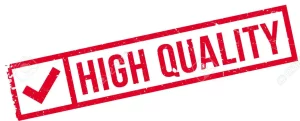- Premium Academic Help From Professionals
- +1 757 528 8682
- support@standardwriter.com
Organizational Culture and Business Ethics Assignment
Organizational Culture and Business Ethics Assignment
|
Order Number |
636738393092 |
|
Type of Project |
ESSAY |
|
Writer Level |
PHD VERIFIED |
|
Format |
APA |
|
Academic Sources |
10 |
|
Page Count |
3-12 PAGES |
Instructions/Descriptions
Organizational Culture and Business Ethics Assignment
An organization’s culture influences the ethical conduct of its employees. This makes sense because good behavior is driven by ethical values, and ethical values become embedded in an organization’s dominant culture. Consider the recent unraveling of News Corp., the media giant that owns the New York Post, The Wall Street Journal, Fox Broadcasting, 20th Century Fox, and numerous other media around the world. Critics claim that for many years, News Corp.’s news tabloids have had a culture that rewards aggressive, partisan, and sensationalistic tactics. This culture may have uncovered news, but it allegedly also pushed some segments of the company over the ethical line.47
In particular, one of News Corp.’s British tabloids, News of the World, was caught illegally hacking into the phones of celebrities, victims, and politicians. When the first incident was discovered, the corporate chiefs swore that a rogue reporter alone was responsible. Yet over the next five years, News Corp. paid out more than (USD) $3.3 million to victims of other phone hacking incidents. Similar payouts occurred at one or more of News Corp.’s New York newspapers. News Corp. shut down News of the World when the extent of journalistic wrongdoing recently became public, but critics say that this dysfunctional culture still exists in other parts of the company. “Phone hacking is done by employees within the corporate culture of whatever it takes,'” concluded one journalist.
Merging Organizational Cultures
415
Chapter Fourteen Organ/zat/ona/ Culture
415
Chapter Fourteen Organ/zat/ona/ Culture
n connect*
To assist your learning and test your knowledge about merging organizational cultures, go to www.mcgrawhillconnect.com , which has activities and test questions on this topic.
adaptive culture
An organizational culture in which employees are receptive to change, including the ongoing alignment of the organization to its environment and continuous improvement of internal processes.
4C Corporate Culture Clash and Chemistry is a company with an unusual name and mandate. The Dutch consulting firm helps clients determine whether their culture is aligned (“chemistry”) or incompatible (“clash”) with a potential acquisition or merger partner. The firm also compares the company’s culture with its strategy. There should be plenty of demand for 4C’s expertise. One study estimated that only half of all corporate acquisitions add value, whereas two other studies report that only 30 percent of these acquisitions produce financial gains.48 Meanwhile, mergers have a substantial disruptive effect on the organizations involved, often leading to neglected strategy, employee stress, and customer problems.
Mergers and acquisitions fail partly because corporate leaders are so focused on the financial or marketing logistics of the merging organizations that they do not conduct due diligence audits on their respective corporate cultures.49 Some forms of integration may allow successful mergers between companies with different cultures. However, research concludes that mergers typically suffer when organizations with significantly divergent corporate cultures merge into a single entity with a high degree of integration.50
One recent corporate culture clash occurred when Bank of America (BofA) hastily acquired Merrill Lynch during the great financial crisis. BofA’s “Main Street” culture is about serving middle America with broad-based, accessible services, whereas Merrill Lynch had a much more exclusive culture catering to wealthy clients. Consistent with these divergent client orientations, BofAs culture embraces cost efficiencies and penny pinching, whereas Merrill Lynch had more of an “entidemenf’ culture that encouraged big spending and bigger bonuses. To illustrate, in spite of the company’s staggering losses during the previous year, Merrill Lynch’s CEO spent more than $1 million renovating his office, hired
an executive with a $25 million signing bonus, and handed out billions in bonuses. BofA’s culture is also more cautious and bureaucratic, requiring more signatures and higher-level authority, whereas Merrill Lynch’s “thundering herd” culture was more aggressive, entrepreneurial, and, some say, more likely to venture into ethically questionable territory.51
BICULTURAL AUDIT
Organizational leaders can minimize these cultural collisions and fulfill their duty of due diligence by conducting a bicultural audit.52 A bicultural audit diagnoses cultural relations between the companies and determines the extent to which cultural clashes will likely occur. The bicultural audit process begins by identifying cultural differences between the merging companies. Next, the bicultural audit data are analyzed to determine which differences between the two firms will result in conflict and which cultural values provide common ground on which to build a cultural foundation in the merged organization. The final stage involves identifying strategies and preparing action plans to bridge the two organizations’ cultures.
SABMiller pic and Molson Coors Brewing Company relied on a bicultural audit prior to forming their joint venture, MillerCoors. The due diligence analysis revealed that the two companies had different working styles but similar employee goals. The bicultural audit also helped SABMiller and Molson Coors executives discover cultural differences and thereby anticipate potential culture clashes in the joint venture.53
STRATEGIES FOR MERGING DIFFERENT ORGANIZATIONAL CULTURES
In some cases, the bicultural audit results in a decision to end merger talks because the two cultures are too different to merge effectively. However, even with substantially different cultures, two companies may form a workable union if they apply the appropriate merger strategy. The four main strategies for merging different corporate cultures are assimilation, deculturation, integration, and separation (see Exhibit 14.4).54
Assimilation Assimilation occurs when employees at the acquired company willingly embrace the cultural values of the acquiring organization. Typically, this strategy works best when the acquired company has a weak, dysfunctional culture and the acquiring company’s culture is strong and aligned with the external environment. Culture clash is rare with assimilation, because the acquired firm’s culture is weak and employees are looking for better cultural alternatives. Research in Motion (RIM), the company that produces BlackBerry wireless devices, applies the assimilation strategy by deliberately acquiring only small start-up
MERGER STRATEGY DESCRIPTION WORKS BEST WHEN: Assimilation Acquired company embraces acquiring firm’s culture. Acquired firm has a weak culture. Deculturation Acquiring firm imposes its culture on unwilling acquired firm. Rarely works—may be necessary only when acquired firm’s culture doesn’t work but employees don’t realize it. Integration Merging companies combine the two or more cultures into a new composite culture. Existing cultures can be improved. Separation Merging companies remain distinct entities with minimal exchange of culture or organizational practices. Firms operate successfully in different businesses requiring different cultures. Sources: Based on ideas in A.R. Malekzedeh and A. Nahavandi , “Making Mergers Work by Managing Cultures,” Journal of Business Strategy 11 (May-June 1990), pp. 55-57; K.W. Smith, “A Brand-New Culture for the Merged Firm,” Mergers and Acquisitions 35 (June 2000), pp. 45-50.
EXHIBIT 14.4 Strategies for Merging Different Organizational Cultures
416
Part Four Organizational Processes
416
Part Four Organizational Processes
Southwest Airlines has maintained a strong, distinctive culture throughout its dramatic growth to become America’s largest airline for domestic travel. But most of that growth occurred organically, whereas cultural assimilation practices were needed to help AirTran Airways employees, which Southwest recently acquired, to understand the “Southwest Way.” Southwest executive Bob Jordan also believes the success and popularity of Southwest’s culture will assist this assimilation process. “It’s helpful that Southwest has a great cultural reputation,” says Jordan.55
417
Chapter Fourteen Organizational Culture
417
Chapter Fourteen Organizational Culture
firms. “Small companies . . . don’t have cultural issues,” says RIM co-CEO Jim Balsillie, adding that they are typically absorbed into RIM’s culture with little fuss or attention.56
Deculturation Assimilation is rare. Employees usually resist organizational change, particularly when they are asked to throw away personal and cultural values. In these conditions, some acquiring companies apply a deculturation strategy by imposing their culture and business practices on the acquired organization. The acquiring firm strips away artifacts and reward systems that support the old culture. People who cannot adopt the acquiring company’s culture often lose their jobs. Deculturation may be necessary when the acquired firm’s culture doesn’t work, even when employees in the acquired company aren’t convinced of it. However, this strategy is difficult to apply effectively because the acquired firm’s employees resist the cultural intrusions from the buying firm, thereby delaying or undermining the merger process.
Integration A third strategy is to combine the two or more cultures into a new composite culture that preserves the best features of the previous cultures. Integration is slow and potentially risky because there are many forces preserving the existing cultures. Still, this strategy should be considered when the companies have relatively weak cultures or when their cultures include several overlapping values. Integration also works best when people realize that their existing cultures are not good enough, which motivates them to adopt a new set of dominant values.
417
Chapter Fourteen Organizational Culture
417
Chapter Fourteen Organizational Culture
bicultural audit
A process of diagnosing cultural relations between companies and determining the extent to which cultural clashes will likely occur.
)
Separation A separation strategy occurs when the merging companies agree to remain distinct entities with minimal exchange of culture or organizational practices. This strategy is most appropriate when the two merging companies are in unrelated industries or operate in different countries, because the most appropriate cultural values tend to differ by industry and national culture. This strategy is also relevant advice for the corporate cultures of diversified conglomerates.
For example, Amazon has applied a separation strategy in its acquisition of Zappos. “The Amazon deal got us the best of all worlds,” explains Zappos CEO Tony Hsieh. “We can continue to run independently and grow the Zappos brand and culture.”57 Amazon’s cultural separation approach is rare, however. Executives in acquiring firms usually have difficulty keeping their hands off the acquired firm. According to one estimate, only 15 percent of mergers leave the acquired company as a stand-alone unit.58
The transformation of Ford Motor Company illustrates many of the strategies and practices necessary to change organizations. It reveals how CEO Alan Mulally created an urgency for change, revised systems and structures to support the change, introduced a pilot project (the Ford Focus development team) to spearhead the company’s new global approach, and continuously communicated the change process. Although Ford’s turnaround sounds like an smooth-running process, most organizational change is messy, requiring considerable leadership effort and vigilance. As we will describe throughout this chapter, the challenge of change is not just in deciding which way to go; the challenge is in the execution of this strategy. When leaders discover the need for change and identify preferred paths that will take the company to a better future, the change process involves navigating around the numerous obstacles and gaining organization-wide support for that change.
This chapter unfolds as follows. We begin by introducing Lewin’s model of change and its component parts. Our discussion includes sources of resistance to change, ways to minimize this resistance, and ways to stabilize desired behaviors. Next, the chapter examines four approaches to organizational change—action research, appreciative inquiry, large group interventions, and parallel learning structures. The last section of this chapter considers both cross-cultural and ethical issues in organizational change.
438
Part Four Organizational Processes
437
Chapter Fifteen Organizational Change
Lewin’s Force Field Analysis Model
“The velocity of change is so rapid, so quick, that if you don’t accept the change and move with the change, you’re going to be left behind.”2 This statement by BHP Billiton Chairman (and former Ford CEO) Jacques Nasser reflects the notion that organizations need to keep pace with ongoing changes in their external environment. Organizations are, after all, open systems that need to remain compatible with their external environments (see Chapter 1), such as consumer needs, global competition, technology, community expectations, government (de)regulation, and environmental standards. Successful organizations monitor their environments and take appropriate steps to maintain a compatible fit with new external conditions. Rather than resisting change, employees in successful companies embrace change as an integral part of organizational life. “I’ve always believed that when the rate of change inside an institution becomes slower than the rate of change outside, the end is in sight,” says former General Electric CEO Jack Welch. “The only question is when.”3
ps connect
To assist your learning and test your knowledge about Lewin’s force field model of change, go to www.mcgrawhillconnect.com , which has activities and test questions on this topic.
It is easy to see that environmental forces push companies to change the way they operate. What is more difficult to see is the complex interplay of these forces with the internal dynamics of organizations. Social psychologist Kurt Lewin developed the force field analysis model to describe this process using the metaphor of a force field (see Exhibit 15.1).4 Although it was developed more than 50 years ago, recent reviews affirm that Lewin’s force field analysis model remains one of the most widely respected ways of viewing the change process.5
One side of the force field model represents the driving forces that push organizations toward a new state of affairs. These might include new competitors or technologies, evolving workforce expectations, or a host of other environmental changes. Corporate leaders also produce driving forces even when external forces for change aren’t apparent. For instance, some experts call for “divine discontent” as a key feature of successful organizations, meaning that leaders continually urge employees to strive for higher standards or better practices even when the company outshines the competition. “We have a habit of divine discontent with our performance,” says creative agency Ogilvy & Mather about its corporate culture. “It is an antidote to smugness.”6
The other side of Lewin’s model represents the restraining forces that maintain the status quo. These restraining forces are commonly called “resistance to change” because they
appear to block the change process. Stability occurs when the driving and restraining forces are roughly in equilibrium—that is, they are of approximately equal strength in opposite directions.
Lewin’s force field model emphasizes that effective change occurs by unfreezing the current situation, moving to a desired condition, and then refreezing the system so it remains in the desired state. Unfreezing involves producing disequilibrium between the driving and restraining forces. As we will describe later, this process may occur by increasing the driving forces, reducing the restraining forces, or using a combination of both. Refreezing occurs when the organization’s systems and structures are aligned with the desired behaviors. They must support and reinforce the new role patterns and prevent the organization from slipping back into the old way of doing things. Over the next few pages, we use Lewin’s model to understand why change is blocked and how the process can evolve more smoothly.
Understanding Resistance to Change
force field analysis
Kurt Lewin’s model of systemwide change that helps change agents diagnose the forces that drive and restrain proposed organizational change.
Robert Nardelli pushed hard to transform Home Depot from a loose configuration of fiefdoms to a more performance-oriented operation that delivered a consistent customer experience. Change did occur at the world’s largest home improvement retailer, but at a price. A large number of talented managers and employees left the company, and some of those remaining continued to resent Nardelli’s transformation. Disenchanted staff referred to the company as “Home Despot” because the changes took away their autonomy. Others named it “Home GEpot,” a disparaging reference to the many former GE executives that Nardelli hired into top positions. After five years, the Home Depot board decided to replace Nardelli, partly because he made some unsuccessful strategic decisions and partly because of the aftereffects of Nardelli’s changes.7
unfreezing
The first part of the change process, in which the change agent produces disequilibrium between the driving and restraining forces.
refreezing
The latter part of the change process, in which systems and structures are introduced that reinforce and maintain the desired behaviors.
Robert Nardelli experienced considerable resistance to change at Home Depot. He has plenty of company. One survey reported that 43 percent of U.S. managers identified resistance to change as a primary barrier to workplace
How Effectively Do Organizations around the World Handle Change?8
43% India United States 34% 31% 24% 43% 42% Japan
China United Total Germany France South Kingdom Sample Korea
Percentage of employees, by selected countries, who agree or strongly agree that “change is handled effectively in my organization.” Not all 28,810 employees across the 15 countries surveyed are shown here, but all are included in the “total sample” figure.
productivity. This resistance is not short-lived. Twenty-one percent of 1,700 change agents surveyed across more than 40 countries acknowledged that employees still resisted a specific major change one or two years after it was implemented.9
Resistance to change takes many forms, ranging from overt work stoppages to subtle attempts to continue the old ways.10 A study of bank employees reported that subtle resistance • is much more common than overt resistance. Some employees in that study avoided the desired changes by moving into different jobs. Others continued to perform tasks the old way as long as management didn’t notice. Even when employees complied with the planned changes, they engaged in resistance by performing their work without corresponding cognitive or emotional support for the change.11 In other words, they resisted by letting customers know that they disapproved of the changes forced on them.
Subtle forms of resistance potentially create the greatest obstacles to change because they are not as visible. In the words of one manager, “[Change efforts] never die because of direct confrontation. Direct confrontation you can work with because it is known. Rather, they die a death of a thousand cuts. People and issues you never confront drain the life out of important [initiatives] and result in solutions that simply do not have the performance impact that they should have.”12 This resistance is not unique to North America. As Connections 15.1 describes, Mina Ishiwatari experienced various forms of resistance to her innovative marketing ideas at Hoppy, the Japanese beverage company.
Organizational Culture and Business Ethics Assignment
| RUBRIC | |||
| Excellent Quality
95-100%
|
Introduction
45-41 points The context and relevance of the issue, as well as a clear description of the study aim, are presented. The history of searches is discussed. |
Literature Support
91-84 points The context and relevance of the issue, as well as a clear description of the study aim, are presented. The history of searches is discussed. |
Methodology
58-53 points With titles for each slide as well as bulleted sections to group relevant information as required, the content is well-organized. Excellent use of typeface, color, images, effects, and so on to improve readability and presenting content. The minimum length criterion of 10 slides/pages is reached. |
| Average Score
50-85% |
40-38 points
More depth/information is required for the context and importance, otherwise the study detail will be unclear. There is no search history information supplied. |
83-76 points
There is a review of important theoretical literature, however there is limited integration of research into problem-related ideas. The review is just partly focused and arranged. There is research that both supports and opposes. A summary of the material given is provided. The conclusion may or may not include a biblical integration. |
52-49 points
The content is somewhat ordered, but there is no discernible organization. The use of typeface, color, graphics, effects, and so on may sometimes distract from the presenting substance. It is possible that the length criteria will not be reached. |
| Poor Quality
0-45% |
37-1 points
The context and/or importance are lacking. There is no search history information supplied. |
75-1 points
There has been an examination of relevant theoretical literature, but still no research concerning problem-related concepts has been synthesized. The review is just somewhat focused and organized. The provided overview of content does not include any supporting or opposing research. The conclusion has no scriptural references. |
48-1 points
There is no logical or apparent organizational structure. There is no discernible logical sequence. The use of typeface, color, graphics, effects, and so on often detracts from the presenting substance. It is possible that the length criteria will not be reached. |
Organizational Culture and Business Ethics Assignment
 |
 |
 |
 |
 |
 |
Place the Order Here: https://standardwriter.com/orders/ordernow / https://standardwriter.com/



